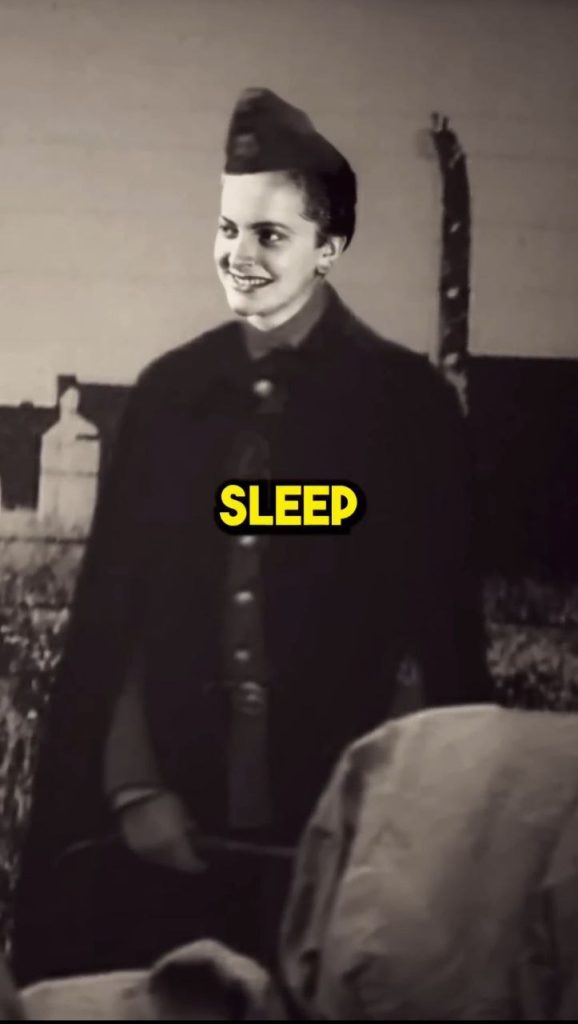Irma Grese: The Hyena of Auschwitz – A Face of Nazi Brutality
Irma Grese, infamously known as “The Hyena of Auschwitz,” was one of the most notorious figures of the Holocaust. As a female SS officer in Nazi concentration camps, she was responsible for heinous crimes against prisoners, earning a reputation for cruelty and sadism. Her name remains a symbol of the horrors committed under the Nazi regime during World War II.
Early Life and Indoctrination into Nazism
Irma Ida Ilse Grese was born on October 7, 1923, in Wrechen, Germany. She was the daughter of Alfred Grese, a strict dairy farmer, and had a difficult childhood. Her mother committed suicide when she was just 12 years old, an event that may have shaped her later disposition.
As a teenager, Grese was deeply influenced by Nazi propaganda, which promoted racial supremacy and militarism. She abandoned her schooling at the age of 15 and briefly worked at various jobs before joining the League of German Girls (BDM), a Nazi youth organization that trained young women to support the regime.
In 1940, at just 16 years old, she volunteered for work in a labor service, later becoming a nurse’s aide. However, rather than pursuing a career in medicine, she gravitated toward the SS. In 1942, she applied to become a concentration camp guard, marking the beginning of her descent into one of history’s darkest roles.
Rise to Power in the Concentration Camps
Grese underwent training at Ravensbrück, a concentration camp known for imprisoning female political prisoners. She quickly proved herself as a devoted Nazi loyalist, catching the attention of her superiors. By 1943, she was transferred to Auschwitz-Birkenau, where she became a key figure in the administration of the extermination camp.
At Auschwitz, Grese was promoted to Senior Supervisor (Oberaufseherin), one of the highest ranks for a female guard. She oversaw thousands of female prisoners and had significant authority. Witness testimonies describe her as a brutal enforcer of Nazi policies, with a sadistic pleasure in tormenting inmates.
The “Hyena of Auschwitz” – Crimes and Cruelty
Grese’s actions at Auschwitz were marked by extreme cruelty. Survivors recall that she would:
- Beat prisoners mercilessly, often to the point of death.
- Set vicious dogs on inmates, watching with satisfaction as they mauled victims.
- Randomly shoot prisoners for amusement, treating executions as a personal sport.
- Sexually abuse and humiliate victims, using her position to degrade and dehumanize them.
- Participate in the selection process, deciding who would be sent to the gas chambers.
One of the most chilling aspects of Grese’s cruelty was her demeanor. Unlike other SS officers who viewed their roles as mere duties, she appeared to relish the suffering of others. Survivors reported that she walked through the camp dressed in custom-made boots, carrying a whip and pistol, exuding a terrifying aura of power.
Grese’s extreme brutality, coupled with her young age and striking appearance, made her particularly infamous among prisoners, who feared her unpredictable violence.
Transfer to Bergen-Belsen and the End of the War
As the Soviet Red Army advanced toward Auschwitz in 1945, the Nazis began evacuating the camp, forcing thousands of prisoners on death marches. Grese was transferred to Bergen-Belsen, where she continued her brutal reign as a supervisor.
Bergen-Belsen was known for its horrific conditions, with thousands dying from disease, starvation, and mistreatment. Grese remained unrepentant in her cruelty, showing no signs of remorse as the war neared its end.
On April 15, 1945, British forces liberated Bergen-Belsen, exposing the unimaginable horrors within. Grese was among those captured by the Allies and was immediately identified as one of the most sadistic figures in the Nazi regime.
The Belsen Trial and Execution
Following her capture, Grese was put on trial at the Belsen Trial in September 1945, alongside other SS officers and camp officials. Survivors provided damning testimonies, detailing her role in the abuse, torture, and execution of prisoners.
Despite overwhelming evidence, Grese remained defiant, denying any wrongdoing and showing no remorse for her crimes. The court found her guilty of war crimes and crimes against humanity, sentencing her to death.
On December 13, 1945, at the age of 22, Irma Grese was executed by hanging in Hamelin Prison. British executioner Albert Pierrepoint carried out the sentence, marking the end of one of the youngest and most notorious war criminals in history.
Legacy of Horror
Irma Grese’s name remains synonymous with the unimaginable cruelty inflicted by the Nazi regime. Her role in Auschwitz and Bergen-Belsen exemplifies the depths of human brutality and serves as a grim reminder of the atrocities committed during the Holocaust.
While many SS officers tried to justify their actions as following orders, Grese’s sadistic pleasure in violence set her apart. Her story continues to be studied as a chilling example of how indoctrination, power, and ideology can transform individuals into monsters.
Conclusion
Irma Grese, “The Hyena of Auschwitz,” will forever be remembered as one of the most sadistic figures of Nazi Germany. Her legacy stands as a stark warning of the horrors that arise when hatred, power, and cruelty are left unchecked.


